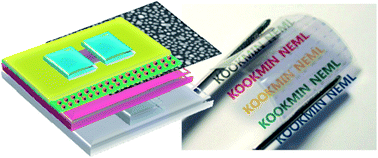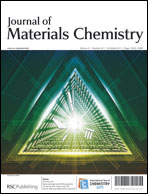Transparent organic thin-film transistors and nonvolatile memory devices fabricated on flexible plastic substrates†
Abstract
Transparent and flexible organic thin-film transistors (OTFTs) and nonvolatile memory devices were developed. The memory device is based on OTFTs by incorporating self-assembled


 Please wait while we load your content...
Please wait while we load your content...